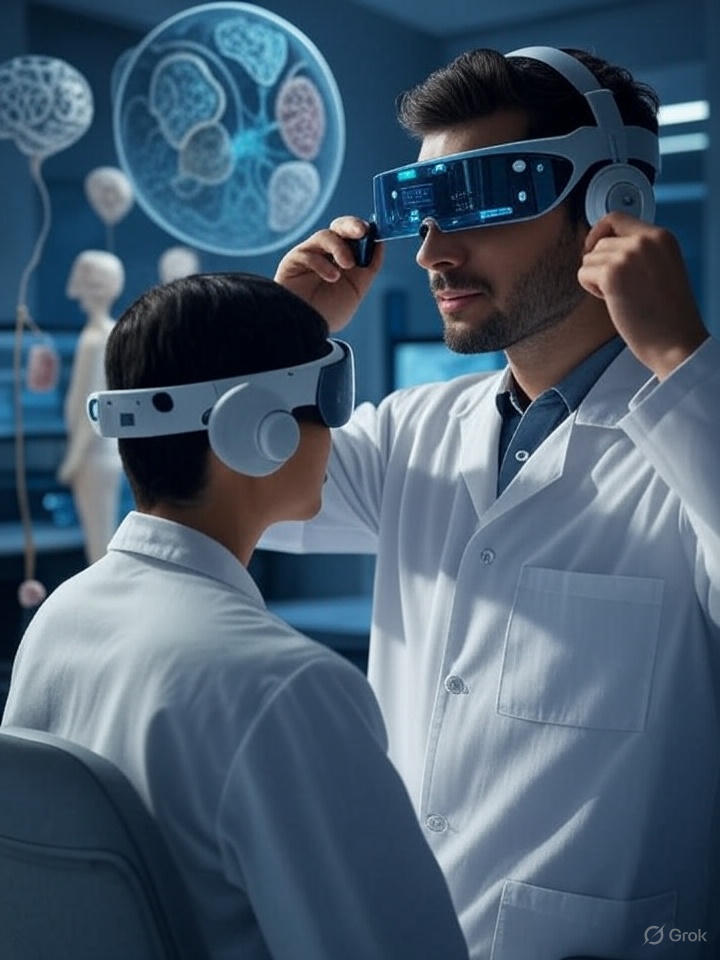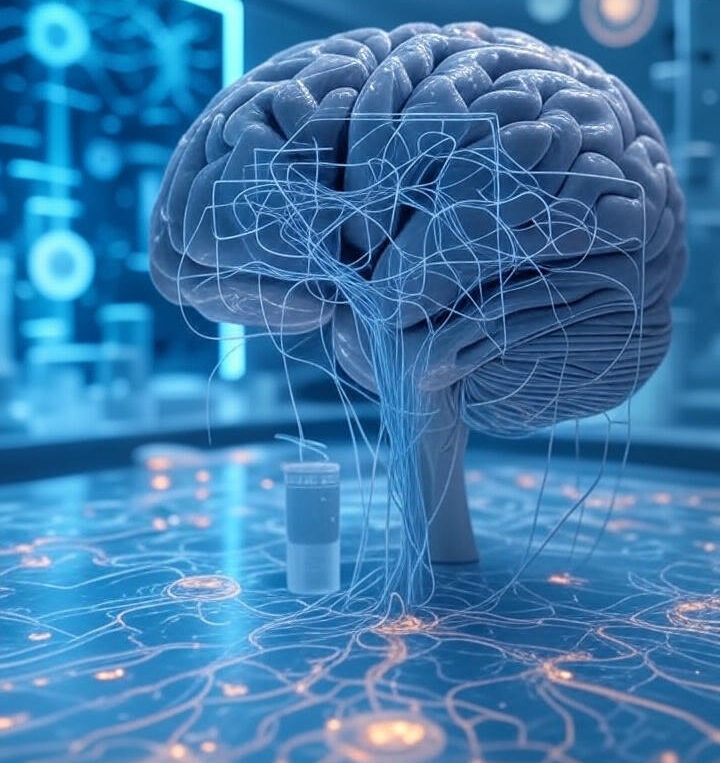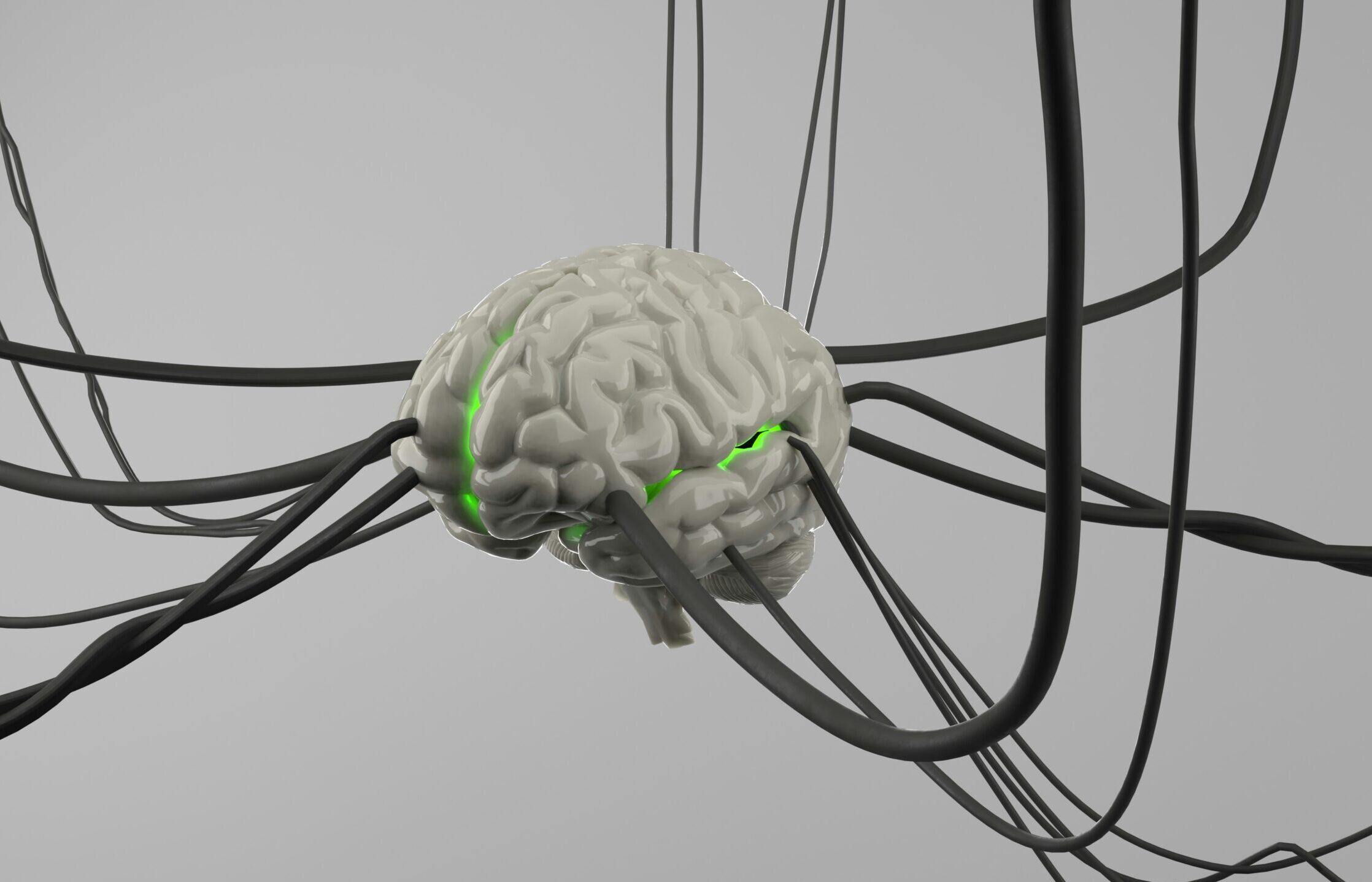Neurotechnology refers to technologies that interact with the nervous system to monitor, modulate, repair, or enhance its functions. It integrates neuroscience, engineering, and computer science to develop tools such as brain-computer interfaces (BCIs), neuroimaging systems, neurostimulation devices, and neural prosthetics. These innovations aim to understand brain activity, treat neurological disorders, restore lost functions, and potentially augment human capabilities. Neurotechnology holds transformative potential across healthcare, communication, education, and entertainment, but it also raises significant ethical and societal challenges. This report provides a detailed exploration of its definition, historical development, current applications, future prospects, and associated implications.
Definition and Scope
Neurotechnology encompasses a broad range of tools and techniques:
- Brain-Computer Interfaces (BCIs): Devices that translate neural signals into commands for external systems, enabling direct brain control of computers, prosthetics, or other devices.
- Neuroimaging: Techniques like electroencephalography (EEG), functional magnetic resonance imaging (fMRI), and positron emission tomography (PET) to visualize and measure brain activity.
- Neurostimulation: Methods such as deep brain stimulation (DBS) and transcranial magnetic stimulation (TMS) to modulate neural activity for therapeutic purposes.
- Neural Prosthetics: Devices that replace or restore lost sensory or motor functions, such as cochlear implants or robotic limbs controlled by neural signals
- Neuromodulation and Neurofeedback: Technologies that alter brain activity through targeted stimulation or training, often used for mental health or cognitive enhancement.
Neurotechnology’s applications span medical treatments (e.g., Parkinson’s disease, epilepsy), rehabilitation (e.g., stroke recovery), and emerging areas like cognitive augmentation and brain-controlled gaming.
Historical Development
The evolution of neurotechnology reflects advancements in neuroscience and engineering over the past century:
- 1920s: Hans Berger developed EEG in 1924, the first non-invasive method to record electrical activity from the human scalp, laying the foundation for studying brain function (Berger, 1929).
- 1960s–1970s: Early BCI research emerged, with pioneers like Jacques Vidal demonstrating that brain signals could control external devices. In 1973, Vidal’s work showed EEG-based cursor control, marking a milestone in BCI development (Vidal, 1973).
- 1980s: Deep Brain Stimulation (DBS) was introduced by Alim Louis Benabid for treating movement disorders like Parkinson’s disease. By 1987, DBS was used to suppress tremors, gaining FDA approval in 1997 (Benabid et al., 1987).
- 1990s: Functional MRI (fMRI) revolutionized neuroimaging by mapping brain activity through blood flow changes, enabling precise studies of cognitive processes (Ogawa et al., 1990).
- 2000s: Neural prosthetics advanced with cochlear implants for hearing loss and retinal implants for vision restoration. BCI systems became more sophisticated, allowing paralyzed individuals to control robotic arms or communicate via text (Hochberg et al., 2006).
- 2010s–Present: Companies like Neuralink (founded 2016) and Synchron developed implantable BCIs to restore motor function and explore cognitive enhancement. Non-invasive technologies like TMS gained traction for depression treatment.
Early Foundations (18th–20th Century)
- 1791: Luigi Galvani discovers bioelectricity in frogs.
- 1875: Richard Caton records first animal EEG signals.
- 1924: Hans Berger invents human EEG.
- 1950s: Wilder Penfield maps brain functions via electrical stimulation.
Modern Era (Late 20th–21st Century)
| Year | Breakthrough | Impact |
|---|---|---|
| 1988 | First cochlear implant FDA-approved | Restored hearing for millions |
| 1997 | Deep Brain Stimulation (DBS) for Parkinson’s | Treats tremors, OCD, epilepsy |
| 2016 | Neuralink founded (Elon Musk) | Pushed BCIs into mainstream R&D |
| 2020 | FDA approves first AI-based EEG for epilepsy | Real-time seizure prediction |
| 2023 | Synchron’s BCI enables paralyzed patients to text via thought | Telepathic communication begins |
These milestones highlight neurotechnology’s progression from basic brain monitoring to complex, therapeutic, and augmentative applications.
Current Applications
Neurotechnology is actively transforming multiple domains with practical and innovative solutions:
- Medical Treatments:
- Deep Brain Stimulation (DBS): Used to treat Parkinson’s disease, essential tremor, and dystonia by implanting electrodes to modulate abnormal neural activity. Over 160,000 patients worldwide have received DBS implants (Perlmutter & Mink, 2006).
- Transcranial Magnetic Stimulation (TMS): A non-invasive technique approved for treatment-resistant depression, using magnetic fields to stimulate cortical neurons (O’Reardon et al., 2007).
- Epilepsy Management: EEG-based systems detect seizures, while responsive neurostimulation devices (e.g., Neuropace) deliver targeted pulses to prevent them.
2. Brain-Computer Interfaces:
- Neuralink: In 2024, Neuralink’s first human trial enabled a quadriplegic patient to control a computer cursor and play chess using brain signals, showcasing potential for paralysis rehabilitation (Neuralink, 2024).
- Synchron: Its stent-like BCI, inserted via blood vessels, allows patients with amyotrophic lateral sclerosis (ALS) to send texts or browse the web using thought alone.
- Invasive: Implanted electrodes (e.g., Neuralink’s N1 chip).
- Example: A paralyzed man tweets using a Utah Array implant (2021).
- Non-Invasive: EEG headsets (e.g., Emotiv, NextMind).
- Example: Gamers control VR with thought alone (2023).
- Invasive: Implanted electrodes (e.g., Neuralink’s N1 chip).
3. Neural Prosthetics:
- Cochlear Implants: Restore hearing for over 700,000 individuals globally by stimulating the auditory nerve.
- Retinal Prosthetics: Devices like the Argus II help visually impaired individuals perceive light patterns, partially restoring vision.
- Robotic Limbs: BCIs enable amputees to control prosthetic arms with neural signals, improving dexterity and independence (Hochberg et al., 2012).
4. Neuroimaging:
- fMRI and EEG guide surgical planning for epilepsy and brain tumors, while real-time imaging supports research into cognition and behavior.
- fMRI: Maps brain activity via blood flow (used in lie detection research).
- fNIRS: Portable brain monitoring for ADHD diagnosis.
5. Mental Health and Neurofeedback:
- Neurofeedback systems train individuals to regulate brain activity, aiding conditions like ADHD and anxiety. Wearable EEG devices, like Muse, promote mindfulness through brainwave monitoring.
6. Neuromodulation
- Deep Brain Stimulation (DBS): Treats Parkinson’s (over 200,000 implants).
- Transcranial Magnetic Stimulation (TMS): FDA-approved for depression.
7. Neuroprosthetics
- Mind-controlled limbs (Johns Hopkins’ Modular Prosthetic Limb).
- Retinal implants (Argus II restores vision to blind patients).
These applications demonstrate neurotechnology’s ability to address critical medical needs and enhance quality of life.
Future Prospects
Neurotechnology is poised for significant advancements by 2030 and beyond, driven by innovations in miniaturization, artificial intelligence (AI), and neural decoding:
- Advanced BCIs:
- Fully implantable, wireless BCIs could enable seamless control of devices, from smartphones to exoskeletons, enhancing mobility for paralyzed individuals.
- Cognitive BCIs may allow “telepathic” communication, where thoughts are transmitted directly between brains or to digital systems, as envisioned by Neuralink’s Elon Musk (Musk, 2019).
2. Cognitive Enhancement:
- Neural implants could boost memory, learning, or decision-making, transforming education and professional training. For example, DARPA’s programs aim to enhance soldier cognition through neuromodulation.
- Non-invasive devices may improve focus or creativity, accessible to the general public for productivity or gaming.
3. Medical Breakthroughs:
- Neurotechnology could treat Alzheimer’s by restoring neural circuits or slowing degeneration through precise stimulation.
- Mental health therapies may advance with closed-loop systems that adapt stimulation based on real-time brain activity, personalizing treatment for depression or PTSD.
4. Neurogaming and Virtual Reality:
- BCIs could create immersive gaming experiences, where players control avatars or environments with their minds, revolutionizing entertainment.
5. Human-Machine Integration:
- Neural interfaces may merge human cognition with AI, enabling rapid data processing or augmented reality directly in the brain, though this remains speculative.

Challenges
Despite its potential, neurotechnology faces hurdles:
- Technical: Improving biocompatibility, minimizing invasive surgery risks, and increasing device longevity are critical for implantable systems.
- Ethical: Privacy concerns arise from brain data collection, with risks of hacking or unauthorized access. Cognitive enhancement could exacerbate social inequalities.
- Regulatory: Global standards for safety, efficacy, and ethical use are needed to prevent misuse or harm.
- Societal: Public acceptance of invasive neurotechnology and its implications for identity or autonomy remains uncertain.
Ethical and Societal Implications
Neurotechnology’s ability to access and alter brain activity raises profound ethical questions:
- Privacy and Security: Neural data could reveal thoughts, emotions, or memories, necessitating robust protections against misuse by corporations or governments.
- Equity: Access to cognitive enhancement or advanced therapies may be limited to wealthy individuals, widening social gaps.
- Consent and Autonomy: Ensuring informed consent for brain-altering technologies, especially in vulnerable populations, is critical.
- Identity and Humanity: Augmenting cognition or integrating with machines may challenge notions of self and human uniqueness.
- Misuse Potential: Neurotechnology could be weaponized (e.g., neural manipulation) or used for coercive purposes, requiring strict oversight.
Ethical & Societal Challenges
| Issue | Risk | Mitigation Strategies |
|---|---|---|
| Privacy | Brain data hacking | Quantum encryption for neural signals |
| Inequality | “Neuroprivilege” for enhanced humans | Universal BCI access policies |
| Identity Threats | AI altering personal memories | Neuro-ethics committees |
| Safety | Malware hijacking motor implants | Neural firewall systems |
Global Leaders in Neurotech
| Organization | Focus | Breakthrough |
|---|---|---|
| Neuralink (USA) | High-bandwidth BCIs | First human implant (2024) |
| Synchron (AUS/USA) | Stentrode (blood-vessel BCI) | FDA trial for paralysis (2023) |
| Blackrock Neurotech | Utah Array implants | 30+ years of BCI research |
| Kernel (USA) | Non-invasive neuroimaging | Flux EEG for consumer use |
| Wyss Center (CH) | Fully paralyzed patients control robots | BrainGate trials |
Ethical frameworks, informed by interdisciplinary dialogue, must balance innovation with responsibility to ensure equitable and safe development.
Neurotechnology represents a frontier in human advancement, evolving from early EEG experiments to sophisticated BCIs and neurostimulation systems. Its current applications, from treating Parkinson’s to enabling thought-controlled devices, demonstrate its life-changing impact. Looking ahead, neurotechnology promises breakthroughs in medicine, cognition, and human-machine integration, but its trajectory depends on overcoming technical, ethical, and societal challenges. By fostering responsible innovation, neurotechnology can enhance human potential while safeguarding fundamental values. Continued research, regulation, and public engagement will shape its role in the future of science and society.
References
- Berger, H. (1929). Über das Elektrenkephalogramm des Menschen. Archiv für Psychiatrie und Nervenkrankheiten, 87, 527–570.
- Benabid, A. L., et al. (1987). Combined (thalamotomy and stimulation) stereotactic surgery of the VIM thalamic nucleus for bilateral Parkinson disease. Applied Neurophysiology, 50(1-6), 344–346.
- Hochberg, L. R., et al. (2006). Neuronal ensemble control of prosthetic devices by a human with tetraplegia. Nature, 442(7099), 164–171.
- Hochberg, L. R., et al. (2012). Reach and grasp by people with tetraplegia using a neurally controlled robotic arm. Nature, 485(7398), 372–375.
- Musk, E. (2019). An integrated brain-machine interface platform with thousands of channels. bioRxiv, 703801.
- Neuralink. (2024). First human implant update. Retrieved from neuralink.com.
- O’Reardon, J. P., et al. (2007). Efficacy and safety of transcranial magnetic stimulation in the acute treatment of major depression. Biological Psychiatry, 61(11), 1208–1216.
- Ogawa, S., et al. (1990). Brain magnetic resonance imaging with contrast dependent on blood oxygenation. Proceedings of the National Academy of Sciences, 87(24), 9868–9872.
- Perlmutter, J. S., & Mink, J. W. (2006). Deep brain stimulation. Annual Review of Neuroscience, 29, 229–257.
- Vidal, J. J. (1973). Toward direct brain-computer communication. Annual Review of Biophysics and Bioengineering, 2, 157–180.















